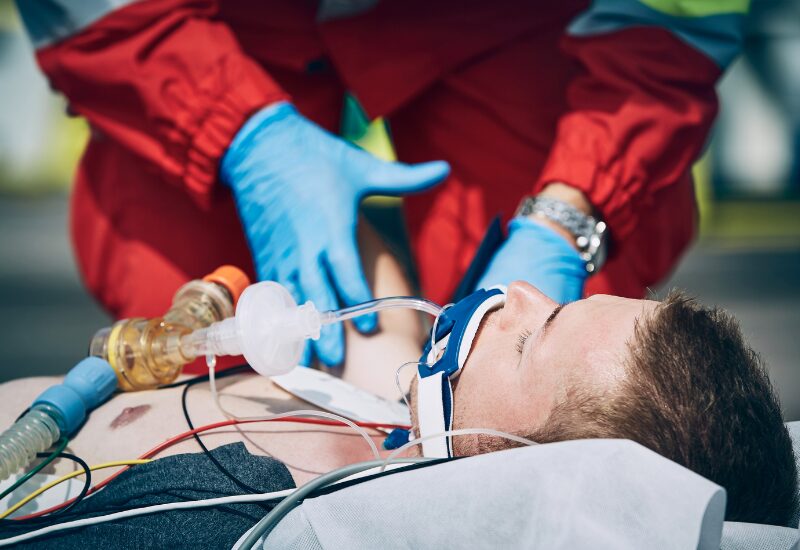In the critical realms of surgical and emergency medicine, securing the airway is a fundamental and life-saving intervention. Traditional methods of intubation, primarily using direct laryngoscopes, have long been the standard. However, the advent of video laryngoscopy has transformed this practice, offering significant advantages in both efficiency and safety. This article explores the key benefits of video laryngoscopes and highlights their most effective features in comparison to traditional alternatives.
Key Advantages of Video Laryngoscopes
Enhanced Visualization
The primary benefit of video laryngoscopy lies in its superior visualization capabilities. Unlike direct laryngoscopy, which requires alignment of the oral, pharyngeal, and laryngeal axes to visualize the vocal cords, video laryngoscopes employ a camera at the blade’s tip, transmitting a real-time video feed to a monitor. This technology provides a clear and magnified view of the airway structures, significantly reducing the need for physical manipulation and the associated risks.
Reduced Physical Trauma
Direct laryngoscopy often requires considerable force and neck manipulation, potentially causing trauma to the teeth, soft tissue, and cervical spine. In contrast, video laryngoscopy’s less invasive approach markedly reduces these risks. This feature is particularly advantageous in patients with limited neck mobility, cervical spine injuries, or airway anomalies.
Improved Success Rates in Difficult Airways
One of the most critical challenges in airway management is intubating a difficult airway, characterized by anatomical variations or obstructions. Video laryngoscopy has demonstrated higher success rates in these scenarios by providing enhanced visualization, allowing clinicians to navigate around obstructions and reducing the likelihood of failed intubation attempts.
Speed and Efficiency in Emergency Situations

EMS & Emergency Services
In emergency settings, time is of the essence. Video laryngoscopy often allows for quicker intubation, as the enhanced view reduces the time spent on attempting to visualize the glottis. This rapid response is crucial in life-threatening situations where every second counts.
Portability and Accessibility
Advancements in video laryngoscope design have led to more compact and portable models, making them accessible in various settings, including pre-hospital environments, emergency rooms, and in-field military operations.
Importance of Battery Life
In the realm of emergency medicine, the reliability of equipment is paramount. The battery life of a video laryngoscope is a critical feature, as it dictates the readiness and availability of the device in urgent scenarios. A long-lasting battery ensures that the laryngoscope can be used multiple times in succession, crucial in environments like emergency rooms or during mass casualty incidents. Additionally, devices with quick charging capabilities and indicators for battery life provide added assurance and readiness for medical professionals.
Durability and Robustness
Durability is a vital consideration, especially for video laryngoscopes used in high-intensity settings such as pre-hospital emergency care or in the field. Devices need to withstand physical impacts, exposure to diverse environmental conditions, and frequent sanitization processes. A durable video laryngoscope not only ensures a longer lifespan but also guarantees consistent performance in various medical situations, reducing the need for frequent replacements and maintenance.
Advantages in the Operating Room

Laryngoscopes in the Operating Room
Training and Educational Value
Video laryngoscopy offers immense educational value. The visual feedback is not only beneficial for the intubating clinician but also serves as a dynamic teaching tool for trainees. The ability to view the procedure in real-time and review recorded footage enhances learning and skill acquisition in airway management.
Reduction in Aspiration Risk
During intubation, there is always a risk of regurgitation and aspiration, especially in emergency settings. Video laryngoscopes allow for quicker and more controlled intubation, reducing the time the airway is unprotected and thereby minimizing the risk of aspiration.
Enhancing Safety in Infectious Environments
In the context of infectious diseases, particularly respiratory infections like COVID-19, minimizing exposure to respiratory secretions is vital. Video laryngoscopy allows greater distance between the healthcare provider’s face and the patient’s airway, reducing the risk of aerosolized exposure.
Integration with Other Technologies
Modern video laryngoscopes can integrate with other technological advancements, such as augmented reality and enhanced imaging software, to further improve the accuracy and safety of intubation procedures.
Patient Comfort and Reduced Sedation Needs
Due to the less invasive nature of video laryngoscopy, patients may experience less discomfort and require lower sedation levels, particularly beneficial in high-risk patients where excessive sedation poses additional risks.

